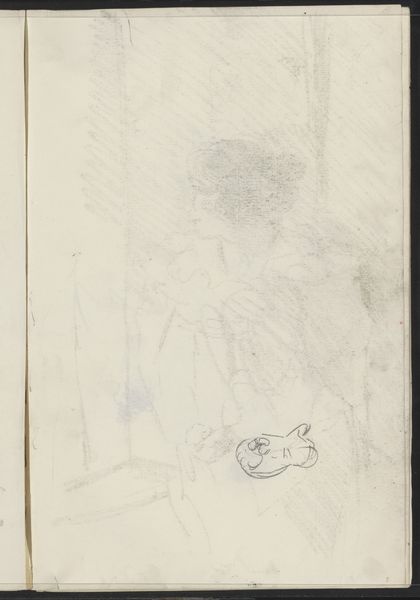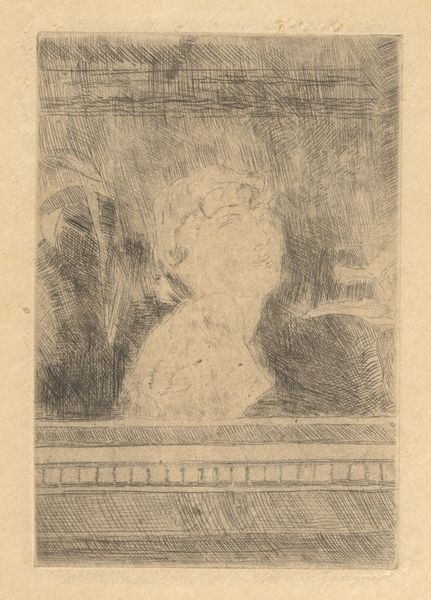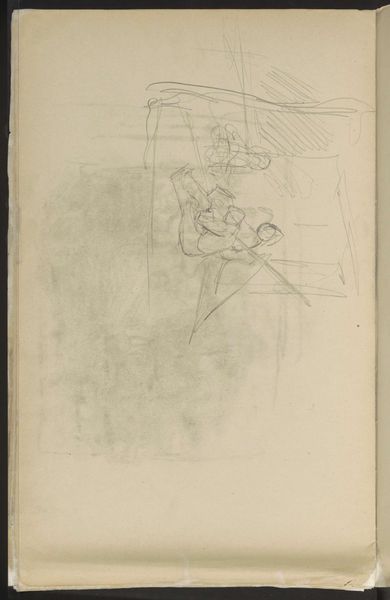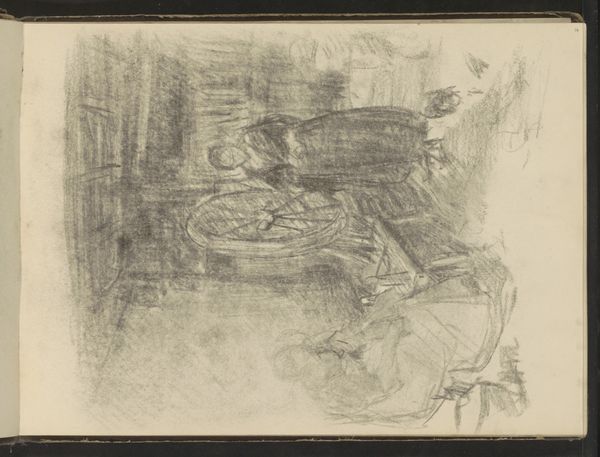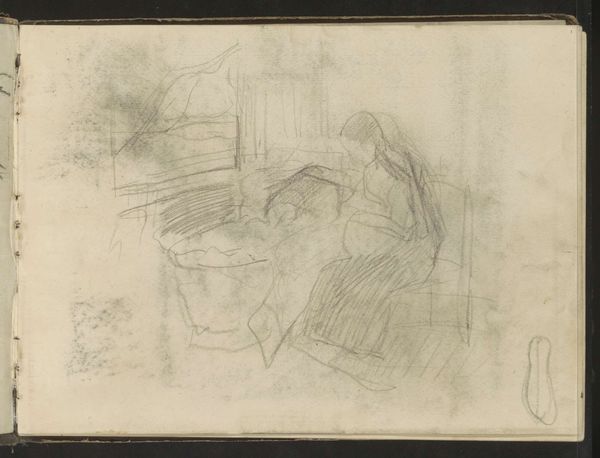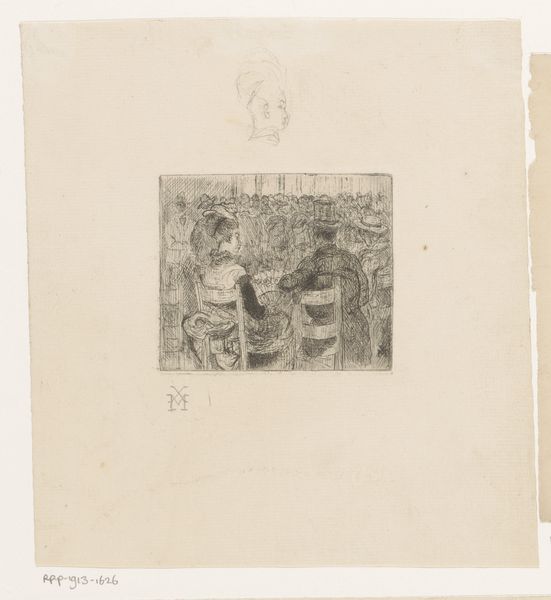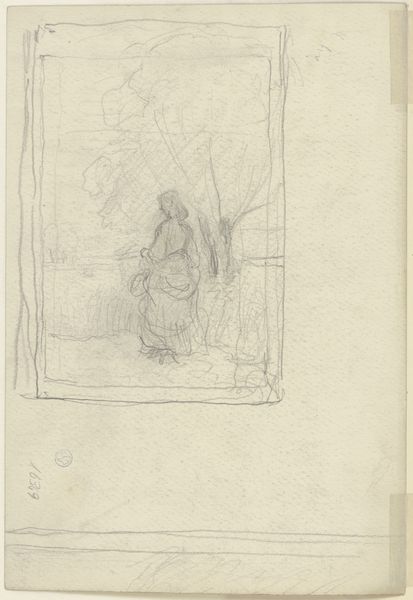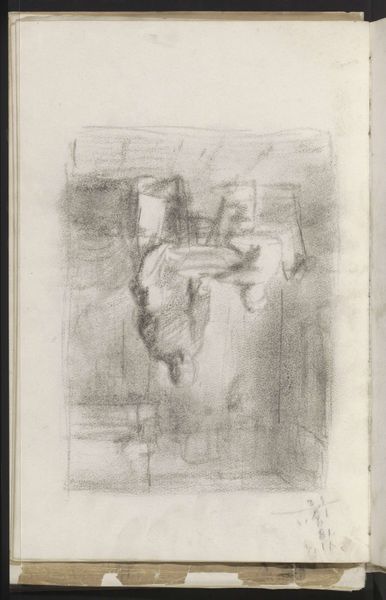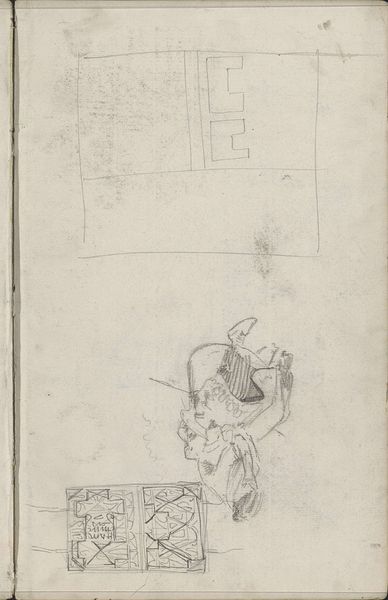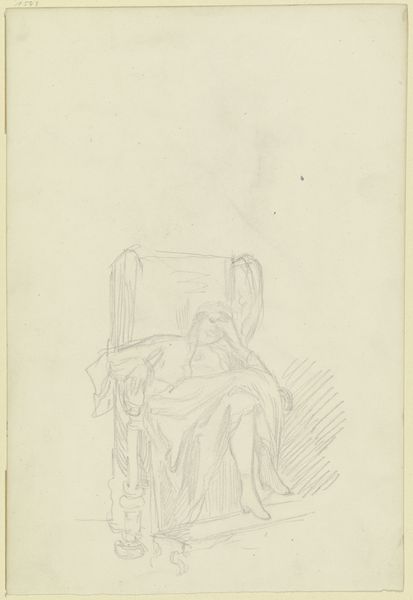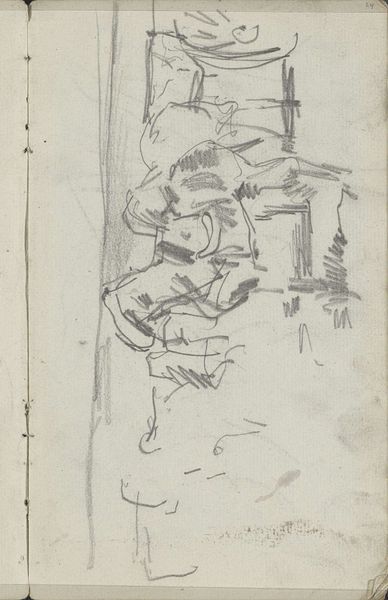
drawing, paper, pencil, chalk, graphite
#
drawing
#
paper
#
pencil
#
chalk
#
graphite
#
realism
Copyright: Public Domain
Curator: Here at the Städel Museum, we're fortunate to house Otto Scholderer's drawing, "Stillleben mit Früchten, Gläsern und Flaschen" which translates to "Still Life with Fruit, Glasses, and Bottles." It’s rendered in graphite, chalk, and pencil on paper. Editor: My first impression is one of understated elegance. The limited tonal range created through pencil and chalk is moody, even a bit melancholic. There’s an implied sense of temporal passing within the scene. Curator: It's a study piece. I’m particularly interested in the composition. It reveals much about artistic training and the conventions surrounding still life. Look at how objects are carefully arranged—the positioning of fruit around the larger form of what seems to be a cantaloupe—to draw your eye around the table. This isn’t merely recording what was seen; it’s curated. Editor: Right. I mean, who casually has a selection of glassware next to ripe fruit? There's this clear staging to reinforce bourgeois ideals of domesticity and luxury, albeit subtly. Do you see how the sketchy, unfinished quality contrasts sharply with the subjects themselves? Curator: Indeed! While incomplete, the piece captures this interest in representing the everyday world—the rise of realism. We also can think about art academies and the market pressures. Still life became this area of specialization as genre painting also began to be more important to people during the rise of realism and into impressionism. Editor: The muted tones actually feel quite contemporary. There's a rawness to the technique, which feels deeply personal. It evokes themes related to environmental impact too. Curator: That’s a really insightful interpretation. I tend to look more at the impact of social factors and consider the art market itself. Editor: And those frameworks are also really important for examining the piece! This drawing provides so many starting points to ask what exactly shapes our perception of the world and the art historical cannon. Curator: Thank you for your reflections! Examining artistic intentions, market factors, and academic expectations—that gives us the basis for engaging with this intriguing drawing.
Comments
No comments
Be the first to comment and join the conversation on the ultimate creative platform.
